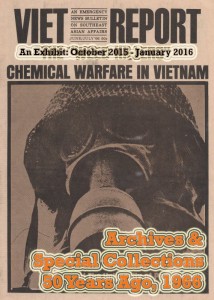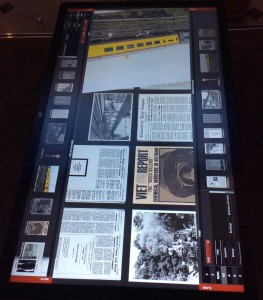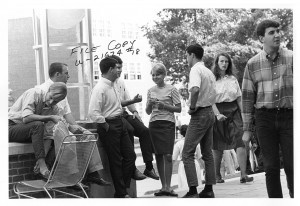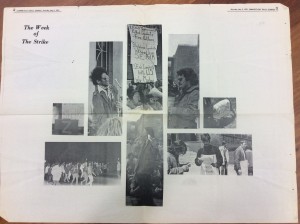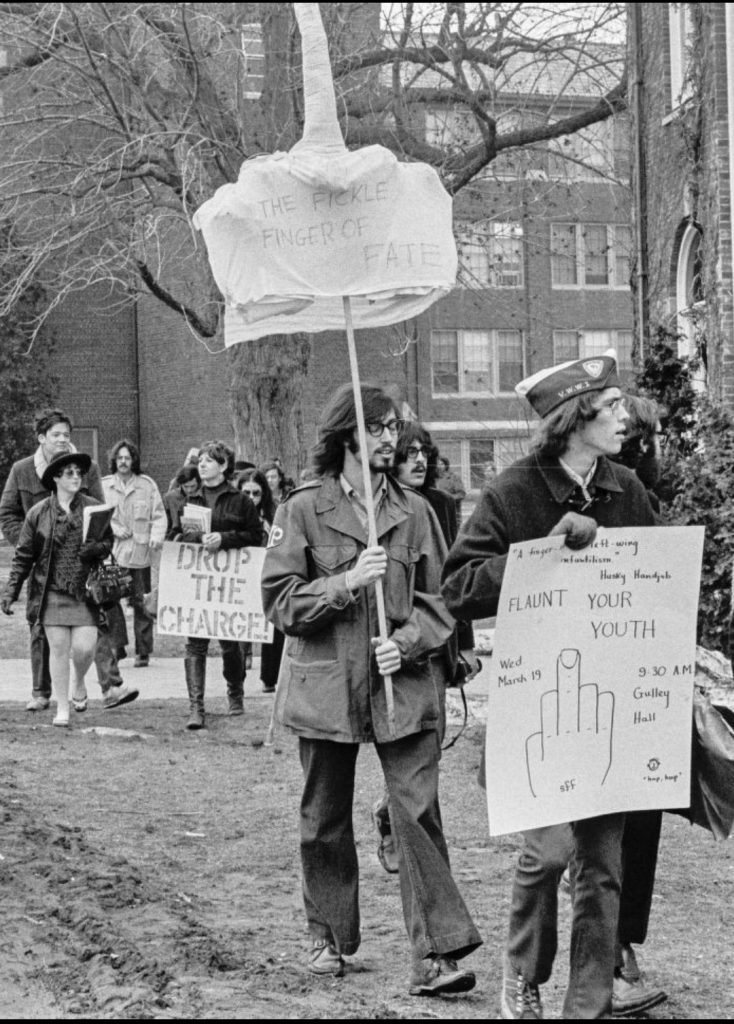
Chris Malis and Ken Sachs lead the way at a March 20, 1969 “Finger-In” demonstration at Gulley Hall organized by SDS.
The following guest posts by alumni Chris Malis (’72) and Ellie Goldstein/Erickson (’70) are in conjunction with the current UConn Archives exhibition Day-Glo & Napalm: UConn 1967-1971 guest curated by George Jacobi (’71). The exhibition is on display until October 25th in the Thomas J. Dodd Research Center. The Gallery is open Mon-Fri 9-4pm, with a Saturday viewing on October 12th, 9-5pm.
Guest Post by Chris Malis (’72):
We Are Stardust
Coming of age in the Sixties (c.1965-c.1972) was a gift; it made me who I am now. Contrary to the changes of many as they age, I have not grown more conservative over the years. Am I the same person I was then? Of course not. Would my 20-year-old self like my 70-year-old self? Perhaps not so much. Would I do (or not do) certain things differently if I could go back in time? Sure. But on the whole, I feel grateful to have come of age in that time and space. It was the most magical, earth-shaking decade of the 20th Century. I won’t say earth-changing, because … look around. Who would have thought that, 50 years later, we’d still be fighting racism, poverty, war, women’s reproductive rights, income inequality, sexual violence, and impending environmental collapse?
In the words of Lincoln’s first inaugural address on March 4, 1861: “We are not enemies, but friends. We must not be enemies. Though passion may have strained, it must not break our bonds of affection. The mystic chords of memory will swell … when again touched, as surely they will be, by the better angels of our nature.”
The Sixties, for me, was a time of better angels coming to the fore. I desperately hope they return in force… and soon!
Continue reading
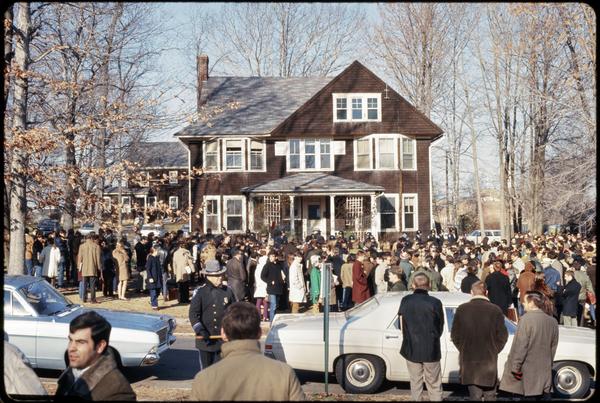
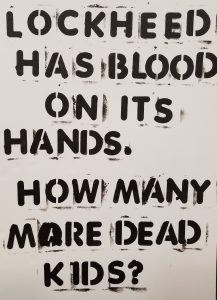
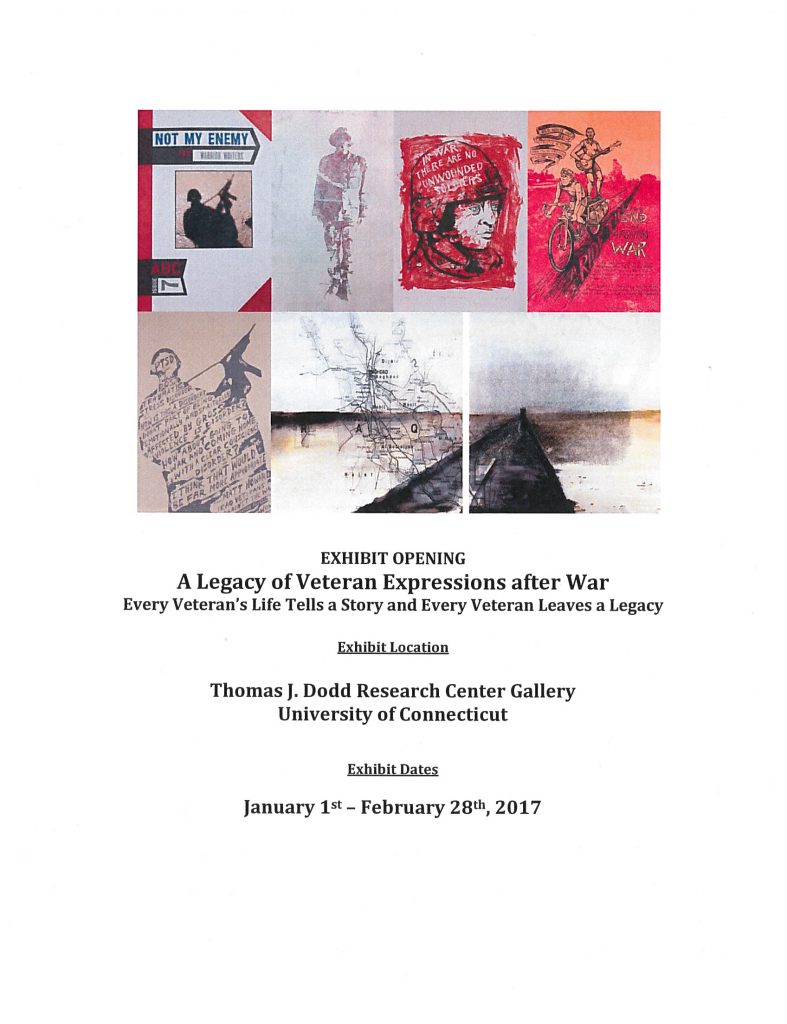 A correlating exhibition will be on display this spring in the hallway of the Dodd Center featuring photographic prints and oral histories of veteran’s from the Balkans conflict. Materials featured will be products of Robin’s photographic work and Jordan’s PhD research.
A correlating exhibition will be on display this spring in the hallway of the Dodd Center featuring photographic prints and oral histories of veteran’s from the Balkans conflict. Materials featured will be products of Robin’s photographic work and Jordan’s PhD research.